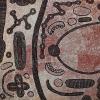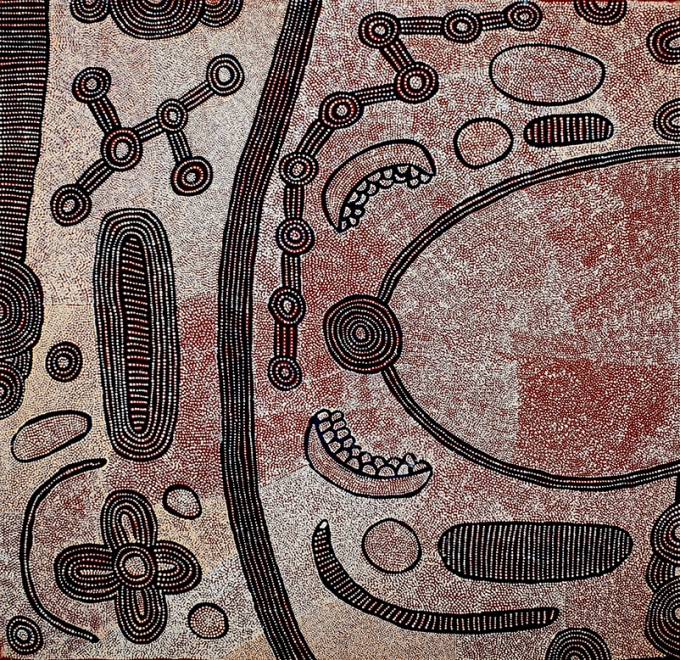Kiwirrkura artists generally evoke the memory of the Great Ancestors who, during the Dreamtime - the time of Creation for the Aborigines - roamed the vast expanses of the Australian desert. At each of their stops, they founded a sacred site and established the ceremonies that were to take place there in their memory.
This painting is about a Dreaming linked to the sacred site of Ngaminya (south-west of Kiwirrkura) where a group of female Ancestors stopped to perform ceremonies.
While there, they also collected berries known as "desert grapes" or "kampurara" in Pintupi. These grapes can be eaten raw as soon as they are harvested, or crushed to make bread dough, or dried after being fixed on sticks. These fruits have a sacred value because they were a rare food resource in a hostile environment; indeed, the Aborigines say that the large rocks at Ngaminya were formed by huge piles of "kampurara".
In keeping with the pictorial tradition of the desert, Payu Napaltjarri's evocation of Ngaminya takes the form of a satellite vision, offering a highly abstract cartography that combines different levels of interpretation.
First of all, the central concentric circle represents Ngaminya, surrounded by two 'U' shapes symbolising two ancestors accompanied by their digging sticks and 'coolamons' (carved wooden baskets in which babies, berries and water are stored). The large circles all around are other sites mentioned in the legend, and are surrounded by participants. The concentric circles linked by dotted lines symbolise the paths taken to get from one site to another. Finally, the smallest circles are the 'kampurara'.
Like most desert painters, Payu uses dot painting. The resulting vibratory effect conveys the very idea of life, and reminds us that for the Aborigines, the Dreamtime does not belong to the past, but to the eternal present, whose permanence is ensured by art and religious rites, and that it is above all continuous creation and energy.
This work is provided with a certificate of authenticity.

